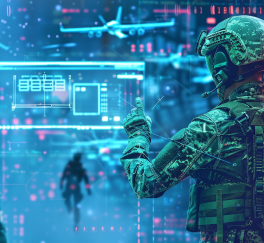Understaning MLOps
MLOps can be defined as the set of best practices, tools, and processes aimed at operationalizing and scaling machine learning models efficiently. It involves the collaboration of data scientists, developers, and operations teams to streamline the deployment and maintenance of machine learning models in real-world environments. Here's a breakdown of its key components:
-
Data Management: Proper handling and management of data, including data ingestion, preprocessing, and storage, are crucial for effective MLOps.
-
Model Training: This involves developing and fine-tuning machine learning models using historical data to ensure accuracy and reliability in predictions.
-
Model Deployment: Once trained, models need to be deployed in production environments where they can make real-time predictions. Deployment should be seamless and scalable.
-
Model Monitoring and Maintenance: Continuous monitoring of deployed models is essential to ensure they perform optimally over time. This includes detecting and addressing issues such as data drift and model degradation.
-
Automation: Automating repetitive tasks such as model training, deployment, and monitoring helps streamline the MLOps workflow, saving time and resources.

MLOps in Military Applications
In military operations, where rugged technology plays a pivotal role in providing critical support and decision-making capabilities in harsh and unpredictable environments, the importance of MLOps cannot be overstated. Here's how MLOps intersects with military applications of rugged technology:
-
Real-time Intelligence: Machine learning models deployed on rugged computing systems can analyze vast amounts of data in real-time to provide actionable intelligence to military personnel on the ground.
-
Predictive Maintenance: By monitoring equipment health and performance using machine learning algorithms, military units can anticipate maintenance needs, reducing downtime and ensuring mission readiness.
-
Autonomous Systems: MLOps enables the development and deployment of autonomous systems that can operate independently or assist human operators in various tasks, such as surveillance and reconnaissance.
-
Adaptability and Scalability: With MLOps practices in place, military organizations can rapidly deploy and scale machine learning capabilities to adapt to evolving threats and operational requirements.
-
Enhanced Situational Awareness: By integrating machine learning models with rugged technology, military personnel gain enhanced situational awareness, allowing for better decision-making in complex and dynamic environments.
Leveraging Rugged Technology in MLOps
Rugged computing companies play a crucial role in enabling MLOps in military applications by providing robust and reliable hardware solutions designed to withstand harsh conditions. Here are some features that make rugged technology ideal for MLOps in military settings:
-
Durability: Rugged computing devices are built to withstand extreme temperatures, shock, vibration, and moisture, ensuring reliable performance in challenging environments.
-
Portability: Military-grade rugged technology is often lightweight and compact, making it easy to deploy and operate in the field, even in remote or hostile locations.
-
Extended Battery Life: Long battery life is essential for continuous operation in the field where power sources may be limited or unavailable for extended periods.
-
Secure Connectivity: Rugged devices are equipped with robust security features to ensure secure communication and data transfer, protecting sensitive information from unauthorized access or tampering.
-
Modularity: Rugged computing systems are often modular, allowing for easy integration of additional components or upgrades to meet evolving mission requirements.
Machine Learning Operations (MLOps) plays a crucial role in enhancing the capabilities of rugged technology deployed in military operations. By adopting MLOps best practices and leveraging rugged computing solutions, military organizations can harness the power of machine learning to gain a competitive edge in today's complex and dynamic threat landscape.











